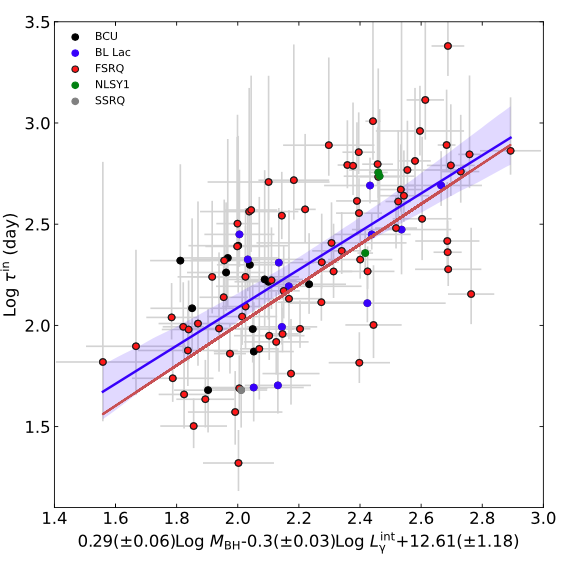
A study led by Dr. XIONG Dingrong of the Yunnan Observatories of the Chinese Academy of Sciences, in collaboration with other researchers, has offered new insights into the variability mechanisms of jetted active galactic nuclei (AGNs). Published in The Astrophysical Journal Supplement Series, the study draws on in-depth analysis of extensive optical survey data.
Jetted AGNs rank among the most energetic objects in the universe, releasing enormous amounts of energy continuously. Their powerful relativistic jets and distinct variability have attracted widespread attention. Unraveling the origins of this variability not only helps clarify the physical processes within these objects but also deepens understanding of the central "black hole engine" driving such phenomena and its surrounding environment. Despite ongoing efforts, a unified explanation for the variability mechanisms of jetted AGNs remains lacking, with no comprehensive, definitive model yet developed.
To address this challenge, the research team used long-term, high-quality optical observational data from the Zwicky Transient Facility (ZTF). By integrating this data with the damped random walk (DRW) model within a Gaussian Process (GP) framework, they achieved more precise fitting of jetted AGNs' light curves. Unlike previous studies, the team analyzed the largest available sample of gamma-ray-emitting jetted AGNs and incorporated jet power—measured via gamma-ray luminosity—as a new parameter, employing a nonparametric Gaussian regression method.
Their findings reveal that a single DRW model cannot fully account for the diverse variability behaviors observed in these AGNs. Notably, the study identified new correlations between intrinsic variability timescale, black hole mass, and jet power, with the relationships differing significantly between jetted AGNs with efficient and inefficient accretion.
Based on these results, the researchers proposed a clearer and more comprehensive model of AGN variability: In high-accretion systems, optical variability likely originates from ultraviolet emission regions within the standard accretion disk—similar to non-jetted AGNs—and is directly linked to shock wave acceleration within the jet. When the jet is oriented toward the observer, variability is amplified by the Doppler beaming effect. In contrast, in low-accretion jetted AGNs, the variability timescale closely corresponds to the electron escape timescale.
The study provides a foundation for developing more accurate variability models and refining observational strategies in future research.
This work received support from the National Natural Science Foundation of China, the Western Light Program of the Chinese Academy of Sciences, and other funding sources.

Figure 1: fitting of optical light curves using the damped random walk model within Gaussian process, with an evaluation of the fitting performance. (Image by Dr. XIONG Dingrong)

Figure 2: intrinsic variability damping timescale versus black hole mass and gamma-ray luminosity for accreting efficient jetted AGNs. (Image by Dr. XIONG Dingrong)

86-10-68597521 (day)
86-10-68597289 (night)

52 Sanlihe Rd., Xicheng District,
Beijing, China (100864)

